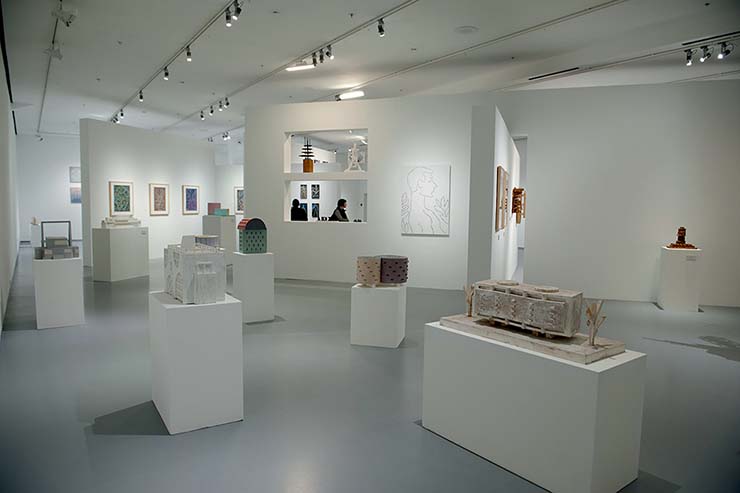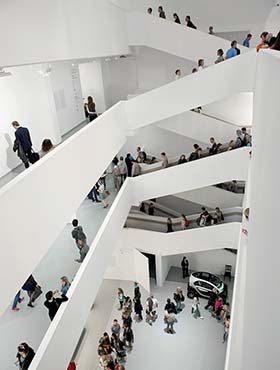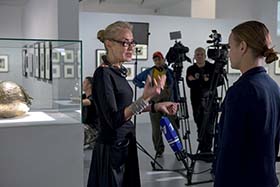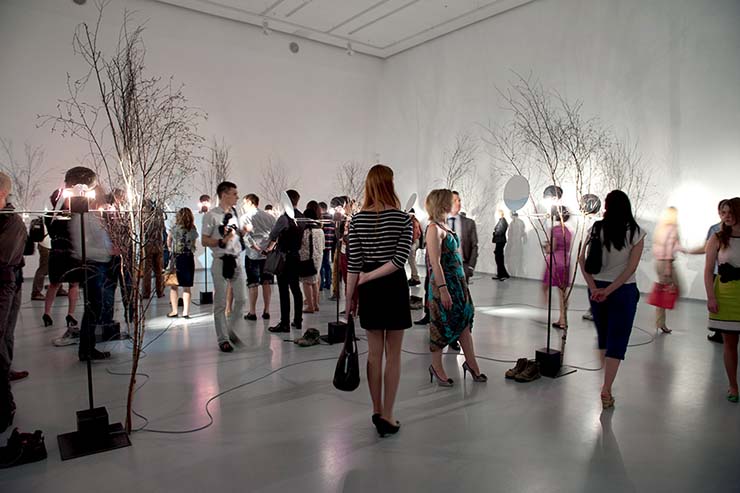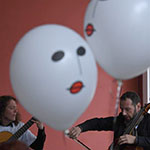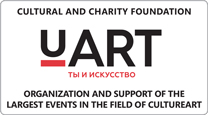Olga Sviblova: «Media is everything the artist uses to create a work»
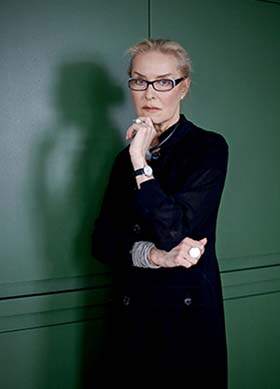 |
This year brings a milestone date for Olga Sviblova, the founder and director of the renowned Multimedia Art Museum Moscow, Meritorious Worker of Arts, and a member of the Presidium of the Russian Academy of Arts. In 1996, when the museum was founded, it became the first Russian art institution that operated according to international standards. Today, MAMM is known and loved both in Russia and worldwide, with its founder named among the top 100 most famous art world personalities. The museum, like its director, doesn’t like to dwell on the past: its focus remains on the outlook for the future and on making new plans.
Y. P.: Olga, what is a modern museum? Silence.
Hello! Hello!
O. S.: I am thinking.
Y. P.: Got it, sorry.
O. S.: The Multimedia Art Museum gets about seven hundred thousand visitors a year, and three quarters of them are younger audience, aged from 18 to 35. This means people need the museum.
A modern museum is a space that one comes to from the daily routine and meets, first of all, oneself – through art. And this is very important. Each exhibition is a message that makes people concentrate on what’s important and think about the meaning of their lives. Art gives us invigorating energy. No one to this day has said it better than Aristotle, who gave the definition of catharsis. But in order to receive this catharsis, to connect to the invigorating energy that pervades a work of art, one needs to have certain knowledge and the ability to see, not just to look. The task of a museum is precisely that: to help the visitor see and feel while showing art. In the rapidly changing world, museums are changing, too, and the boundaries of genres and types of art are being erased. Streets and urban environment become museum space – for example, if we are talking about street art. Art fills in imagined places, it goes online, since communication goes online. And art is communication.
|
Within the museum’s white halls, exhibitions replace one another with incredible speed |
|
…Rodchenko dreamed of a museum that would bring together all types and genres of art. Today his Experiments for the Future have become a reality. You could say we have built the museum on his precepts…
|
O. S.: Yes, of course. For example, at MAMM
we have programs MAMMMusic, MAMMCinema, MAMMPoetry and others. Once the
December Evenings at the Pushkin Museum, founded by Irina Aleksandrovna
Antonova, were a novel example. Today concerts and music events taking place in
museums are a trend. As part of the MAMMMusic program, we have held festivals
of Vladimir Martynov, Philip Glass, and others. VIVARTE is a wonderful festival
that Iveta and Tamaz Manasherov run at the Tretyakov Gallery, and their
|
MAMM annually ranks among the most visited art museums in the countr |
Y. P.: Your museum is called the Multimedia Art Museum. Why did you choose this name?
O. S.: Since its beginnings, art has been
using various media. Media is everything the artist uses to create a work. It
is canvas, paints, marble, foam rubber, garbage, photography, motion picture or
video, sound, and so on. Alexander Rodchenko was essentially a multimedia
artist, working with a variety of techniques and materials in such diverse
areas of art as painting, sculpture, decorative crafts, architecture, printing,
and cinema. He wrote in his diaries that someday his work would be perceived as
a whole. Rodchenko dreamed of a museum that would bring together all types and
genres of art. Today his Experiments for the Future have become a reality. You
could say we have built the museum on his precepts.
Y. P.: Today, who defines the boundaries of what art is?
O. S.: In 1917, Marcel Duchamp put his famous Fountain in the New York Museum. And that was a conceptual revolution. In the museum space, plate dryers and a urinal gained artistic meaning. This radical gesture revealed the symbolic nature of art, our ability to read some new meaning that an object acquires when entering the museum space. Thus it demonstrated the power of context, which affects the meaning of the text. The central figure in the art world is the artist. And the artist’s works on their way to the museum are usually tested by passing through collectors’ hands. The existence of the entire domain of art cannot be imagined without collectors, and it is they who see potential in a young artist. Suffice it to name our great Russian collectors Shchukin and Morozov, who discovered the great French artists Matisse, Gauguin, Van Gogh and others for the world and for France. The gift and the talent to see and sense art, to find new diamonds in the artistic process, both today and throughout the history of art, discovering for the first time or rediscovering something that doesn’t fall within the limits of common values, – this gift is not a lesser one than that of an artist. Many museums across the world were founded by collectors, like the Tretyakov Gallery, or established based on private collections.
|
Olga Sviblova is one of the most influential art curators in Russia and worldwide. |
Gifts are the No.1 factor worldwide by which museum collections grow. I would like to mention the Collection project that took place two years ago at the Pompidou Center. Thanks to the efforts of Russian collectors, more than 500 works of our contemporary artists found their way into this one of the largest and most visited museums in the world. The Pompidou Center has the largest collection of Russian modernism. Vasily Kandinsky, Marc Chagall, Igor Larionov, Natalia Goncharova – the presence of masterpieces of Russian art here is an important part of the cultural dialogue between Russia and the world. Thanks to the Collection gift, with Iveta and Tamaz Manasherov among the contributors, the world has seen the contemporary art of Russia, which is certainly important both for the world and for our country. And if you ask why the Center’s curator Nicolas Gutnikov and myself gathered this collection for the Paris exhibition and not for MAMM, I can say that this project has been accomplished primarily to benefit Russian art and our artists. And it turned out to be a good start: today private Russian collectors give more to Russian museums. As for arranging exhibitions, that has always been a joint effort process for museums. Lat fall at MAMM we showed a superb Constantin Brancusi exhibition from the Pompidou Center, and in September we show Jim Dine, also from there. Currently the Pompidou runs the exhibition entitled Vitebsk, showing the masterpieces of the Russian avantgarde, including those from many Russian museums.
|
Every opening at the museum gathers a full house |
Interview by Yulia Panina

Jim Dine’s autobiographical themes and childhood memories |

Jim Dine. Sawhorse |
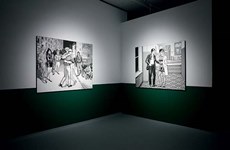
Every opening at the museum gathers a full house |
Back

